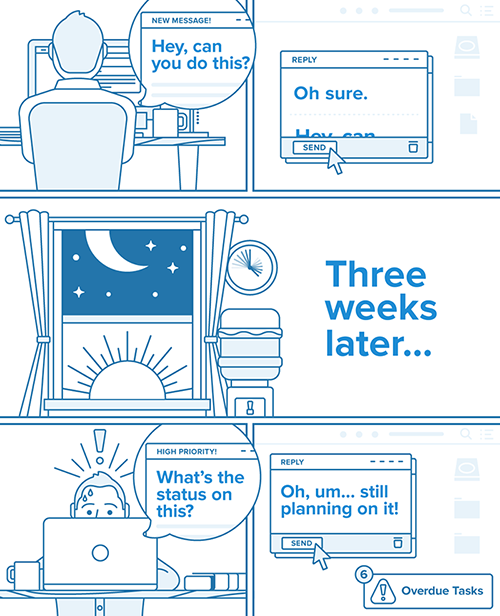10 ways to turn a request into an agreement
For years now, we’ve been living in an age of work requests primarily fueled by email. In fact, we send and receive 108.7 billion emails every single day, according to a study conducted by Radicati. You may feel that every email that comes in your inbox is an ask and most of the time, there’s no sense of accountability associated with completing it.
How many emails have you received from a teammate or manager requesting you to complete a task or take on a project without a clear sense of ownership, deadlines, and strategy for handling unforeseen circumstances? Usually, there’s some convoluted back and forth about the who/what/why, but rarely does the email contain an explicit agreement on goals and accountability.

Most of the time, this means that there is no clear understanding of what will get done and by when, nor are there guidelines that cover various circumstances such as the transferral of a task, or a missed deadline.

If you’ve ever found yourself in the trap of not knowing whether a commitment has been made (or whether your teammate is just trying to appease someone’s wishes), try asking these questions:
- Is it clear that someone has agreed to complete a task?
- Has this agreement been documented?
- Is there a responsible party? If there are numerous stakeholders, who will do what?
- Is there a clear deadline?
- Are all stakeholders aware of the deadline?
- Can this agreement be changed?
- Do all stakeholders understand the priorities and goals?
- How will we handle a missed deadline?
- How will we handle a change in ownership?
- How will success be measured?
To truly accomplish your goals, make sure you’re able to answer all of these questions for every request you receive, be it via email or in Asana.
Once you get into the habit of running through this mental checklist, you’ll find that you’ll have fewer incomplete tasks, and a better understanding of your work priorities. Simultaneously, you’ll decrease the amount of back and forth among teammates — especially if you pose these questions early in the discussions.
Learn more about how to write the perfect task to move work forward.
More Issues
